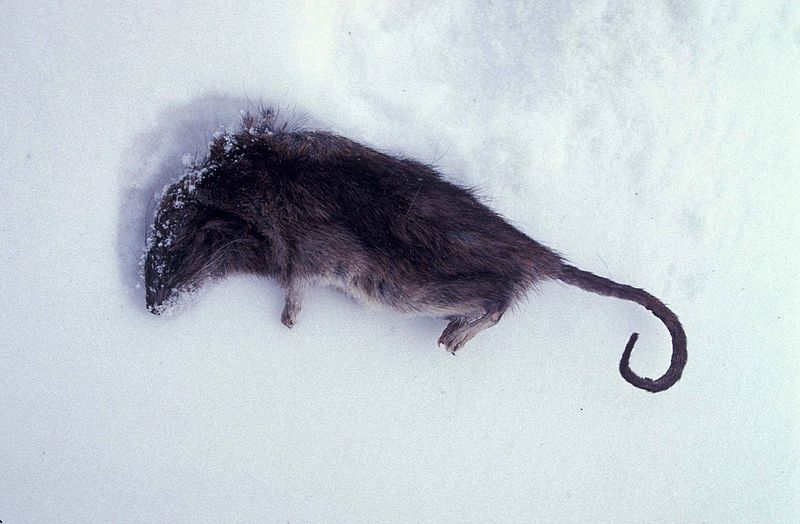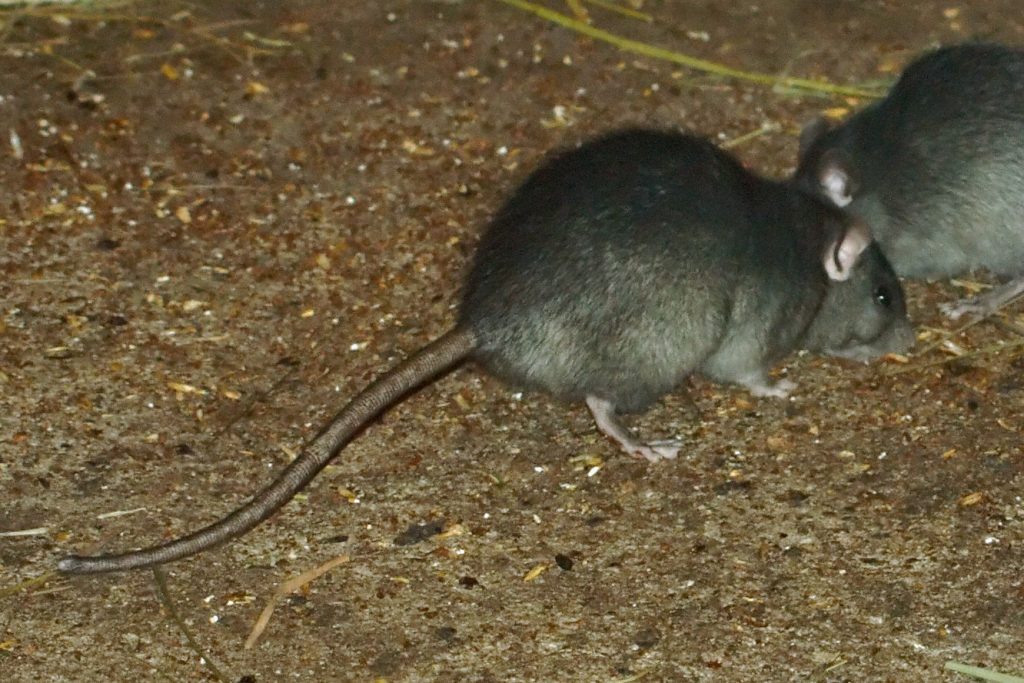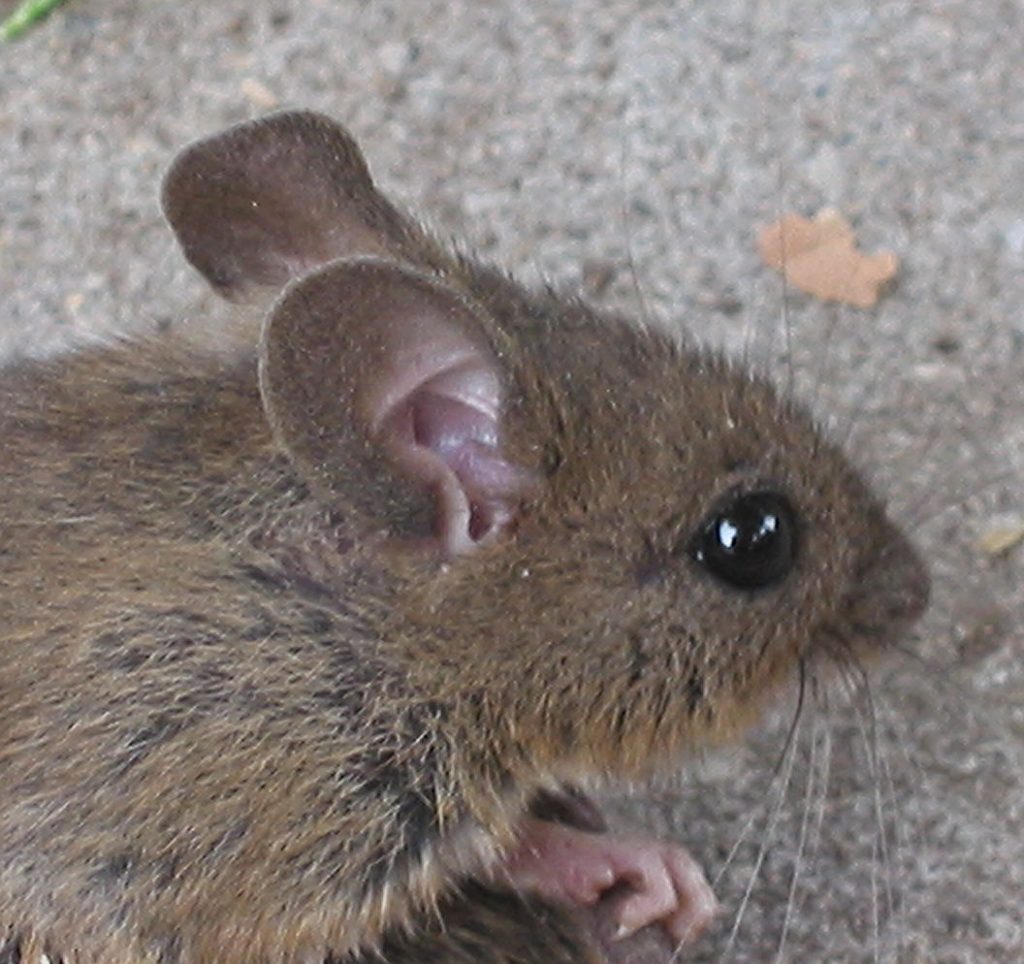Consisting of rats and mice, rodents, which are mammals that are considered nuisance pests, are found throughout most of the planet. Rodents are responsible for vast amounts of damage caused by physical destruction and contamination to homes, businesses, and crops each year. Out-of-control rodent populations can be downright dangerous, as rodents have been known to chew through wires which cause shorts that lead to fires. It is important to keep rodent populations under control as rodents spread disease and provide a host to flea populations which have been known to vector bubonic plague and other deadly diseases.
A rodent infestation is often noted by shredded paper for bedding, urine stains, urine odors, drywall damage, and left behind droppings for which there can be many. Rodents, depending on the type and species, can be found burrowing and running trails in the ground, in attics, along pipe ways, in walls, and trees. Adequate access to food, water, and shelter also play a significant role in nest location. It is imperative to repair all access points on a structure when an infestation is discovered and then clean all contacted surfaces while being sure to discard all foodstuffs that have been contaminated. When conditions are ideal and left untreated, rodent populations have been known to skyrocket, as rodents reproduce quite quickly. Rodents are best controlled by utilizing a combination of methods which include exclusion, trapping and rodenticide baiting.
It is important not to pick up or corner wild rodents as they will bite if threatened. Depending on the size and characteristics of the infestation at hand, rodent control can prove extremely difficult and is best handled by a pest professional. If you are struggling with rodents at your home or business, consider scheduling a site visit and setting up a residential pest service plan or adding a rodent plan to your commercial pest service.
Norway rats can be brown, black, grey and shades in between with an average size of just under a foot. These rats are notably different from the Roof rat, as they are chunkier and have a shorter tail, which will not exceed the head and body in length if maneuvered to do so. Unlike the Roof rat, Norway rats prefer to feed on the ground, nesting and living around wooded areas, in buildings, storm drains, dead vegetation and more. It should be noted, however, Norway rats will frequent, feed and even live above like that of a Roof rat if stressed or forced to do so by environmental demands. These rodents damage and contaminate food, furniture, electrical wiring, textiles and more in everything from homes to warehouses and factories alike every day.

As Norway rats spread filth and disease, control is necessary but can be difficult to achieve. Often, patience and experience are necessary for Norway rat control once a large infestation is present. Due to the nature and versatility of a Norway rat, it is best to consult a pest professional when combating Norway rats. Before your technician arrives, it is a good first step to look around your facility and be sure to remove dead vegetation such as leaves, pick up any garbage/debris left out and seal any holes in the structure including screens, door gaps and around pipe ways. Your technician will assist you in locating any further entry points. Once the structure is secure, a pest professional may choose to trap and/or administer rodenticide to the current rodent population to achieve control.

Roof rats can be grey, brown, black and shades in between with an average size of just under a foot in length. These rats are notably different from the common Norway rat, as they are slimmer and have a longer tail, which should touch or even pass the nose if maneuvered to do so. Unlike Norway rats, roof rats prefer to live and feed high above often found residing in trees, attics, drop ceilings, overhead pipe ways and more, hence the name. It should be noted however, these rats will frequent, feed and even live on the ground when stressed or forced to do so by environmental demands. These rodents damage and contaminate food, furniture, textiles and more in everything from pantries to warehouses and factories alike every day.
As roof rats spread filth and disease, control is absolutely necessary but can be very difficult to achieve. Often time, patience and experience are necessary for roof rat control once a large infestation is present. Due to the nature and versatility of the roof rat, it is best to consult a pest professional when combating roof rats. To get things started before your technician arrives start by removing all items including but not limited to limbs of trees and other vegetation from touching the roof of a structure by at least 18inches (preferably 24inches), as this is the first step to roof rat control. Sealing and screening up all holes, door gaps, entry points, and pipe way gaps is also just as important. Once the structure is secure, a pest professional may choose to trap and/or administer rodenticide to the current rodent population to achieve control.
House mice can be various shades of grey with a size of about two inches or less and weight averaging around one ounce. Unlike rats which require about a quarter-sized gap to enter a structure, mice are much smaller, requiring as little as the end of a pencil to slide on through. Also, unlike rats, mice do not demand a significant water source to infest, as they primarily extract the water, they require from the food they consume. House mice can climb many surfaces and often enter homes and businesses in search of food especially when stressed to do so from things like changing seasons, food supply or when seeking shelter. Mice like rats, damage and contaminate food, furniture, textiles, and more in everything from pantries to warehouses and factories alike every day.

House mice spread filth and disease dropping urine and feces throughout the places they travel which has an unpleasant odor especially when noted in large quantities. Although a single mouse in a home or office may be fixed as easily as setting a simple wooden snap trap picked up from the local hardware store, a larger infestation can be difficult to control and easily explode in size if not remedied quickly. Mice can reproduce every three to four weeks having approximately six or more young each time. Before your technician arrives, it is a good first step to look around your facility and be sure to remove dead vegetation such as leaves, pick up any garbage/debris or accessible food and to seal any holes in the structure including screens, door gaps and around pipe ways. Your technician will assist you in locating any further entry points. Once the structure is secure, a pest professional may choose to trap and/or administer rodenticide to the current rodent population to achieve control. It is important to seal up all accessible foodstuffs in airtight sealable containers when mice have infested.
